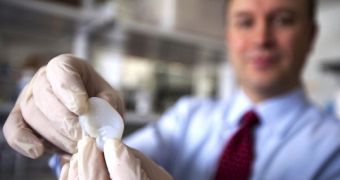A team of researchers working with the Cornell University now maintain that children suffering because of a congenital deformity known to science as microtia can be treated with the help of 3-D printed ears that look and behave strikingly similar to natural ones.
For those unaware, microtia is a medical condition consisting in the fact that the patient's external ear in underdeveloped.
Needless to say, this deformity can spark stigmatization and other similar problems, which is why efforts have long been made to correct it.
According to this team of specialists from Cornell University, 3-D printing can successfully be used to engineer new external ears for those suffering with this congenital deformity.
In order to engineer these ears, the researchers started by feeding the image of a human ear into a computer. Later on, they used a 3-D printer to piece together a mold, which they injected with collagen.
Following their performing these tasks, the researchers proceeded to adding roughly 250 million cartilage cells extracted from cow ears. Once this was done, the researchers merely had to wait for the cartilage to develop and grow.
“It takes half a day to design the mold, a day or so to print it, 30 minutes to inject the gel, and we can remove the ear 15 minutes later. We trim the ear and then let it culture for several days in nourishing cell culture media before it is implanted,” specialist Lawrence Bonassar explains.
“This is such a win-win for both medicine and basic science, demonstrating what we can achieve when we work together,” he added.
Commenting on the importance of their developing this technology of manufacturing 3-D printed ears, Dr. Jason Spector stated as follows:
“A bioengineered ear replacement like this would also help individuals who have lost part or all of their external ear in an accident or from cancer.”
A detailed analysis of this technology and its potential applications was published in the scientific journal PLOS ONE on February 20.

 14 DAY TRIAL //
14 DAY TRIAL //